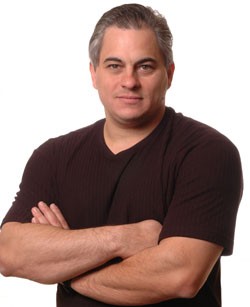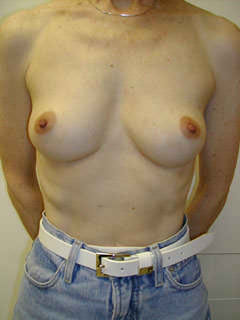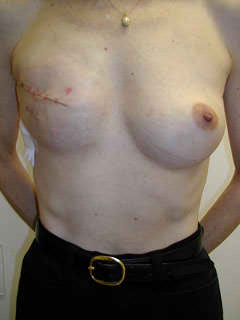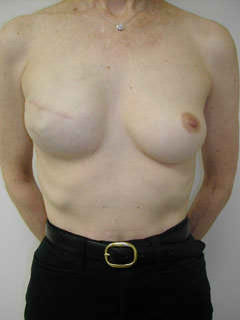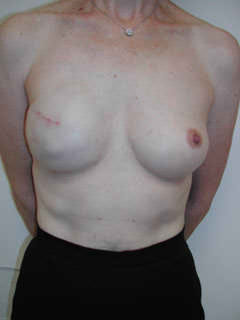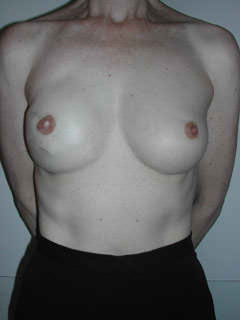 |
|
Breast Reconstruction Utilizing Tissue Expander-JPD
This thin woman presented for consultation about to have right mastectomy for breast cancer. Her tumor was small and she desired immediate reconstruction. She selected a tissue expander-based breast reconstruction. Stage one involved the placement of a tissue expander just following her mastectomy. Above she is shown prior to mastectomy and 2 weeks later with a 500 cc expander inflated to an initial volume of 100 cc. Incremental expansion allows placement at mastectomy with minimized failure due to mastectomy wound breakdown. When we do immediate reconstruction we are at the mercy of wound healing after the mastectomy as well as tissue changes possibly made worse by chemotherapy and irradiation. These treatments that improve cancer survival can do a number on our reconstruction introducing hardening and distortion in some cases. Implant reconstructions are more susceptible to this than tissue-based procedures. Notice here that the expander and breast mound have been lifted by the skin removed at mastectomy eventhough a skin-sparing technique was utilized. Stage I is an operation with an overnight stay in the hospital.
8 Months later the patient has finished chemotherapy and the expander has been incrementally expanded in office visits (under local anesthesia) to 350 cc. Over time, the tissue around the expander has remained soft allowing it to descend to a position mimicking the normal breast fairly well. As we have mentioned, this favorable healing is not always seen.
Stage II surgery involves removal of the tissue expander and placement of a permanent breast implant. This is a low key operation performed as an outpatient. The saline-filled implant placed here starts to show the limitations of the technique in that the patient's thin tissues allow visible wrinkling of the implant to be seen in spots. A silicone gel-filled implant would have rippled less, but then again these implants tend to harden more commonly over the long term. The decision on implant type is a trade-off of sorts.
Stage III surgery involves reconstruction of the nipple/areolar complex. The author's favorite technique involves the use of a skin graft and a local tissue rearrangement on the breast. Like Stage II this is an outpatient procedure. At completion, she could benefit from a tattoo of the nipple on the reconstructed side to make it's color closer to that of the normal breast. This is a very nice tissue expander and implant reconstruction. Patients desiring a better match are better suited to choosing tissue-based techniques from the beginning. Not all implant reconstructions will look this good at their completion.
© John Di Saia, MD... an Orange County California Plastic SurgeonServing Southern California since 1997 * (949) 369-5932
|
| ||||||||||||||||||||
